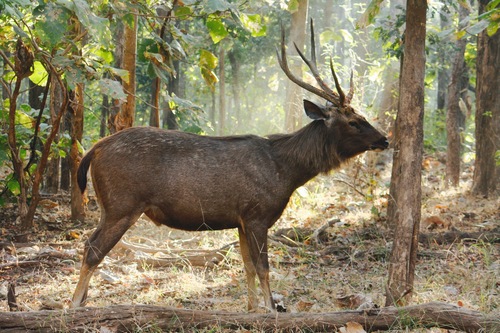
Sambar Deer
The majestic sambar deer (Rusa unicolor) roams the lush forests of Asia. With its rugged coat and striking antlers, this nocturnal grazer is a crucial link in the food chain, sustaining predators like tigers and leopards while maintaining the ecological balance of its habitat.
26 years
Lifespan
109.0 - 544.0 kg
Weight
Length: 1.5 - 2.4 m; Height: 1.2 - 1.5 m
Size
Brown, White
Color
2 years
Age of Sexual Maturity
Vulnerable
Conservation Status
Decreasing
Population Trend
Characteristics
Rusa unicolor, commonly known as the sambar deer, inhabits dense forests across South and Southeast Asia. Notable for its large size, shaggy coat, and distinctive antlers, it is a primarily nocturnal grazer. Sambar deer are key prey for apex predators and play a vital role in forest ecosystems.
Distribution Range of the Sambar Deer
The Rusa unicolor, commonly known as the sambar deer, is native to South Asia, Southeast Asia, and the southern regions of East Asia. Its geographical distribution includes countries such as India, Sri Lanka, Nepal, Bhutan, Bangladesh, Myanmar, Thailand, Vietnam, Laos, Cambodia, Malaysia, Indonesia, and parts of southern China.
Sambar Deer's Habitat
Environmental Conditions
Sambar deer typically inhabit tropical and subtropical forests, including both deciduous and evergreen forests. They are often found in hilly and mountainous regions, ranging from sea level up to elevations of 3,500 meters. The climate in these areas can vary from humid tropical to subtropical, with distinct wet and dry seasons.
Ecological Niche
Sambar deer are primarily browsers, feeding on a variety of vegetation including leaves, grasses, herbs, and fruits. They play a significant role in their ecosystem by influencing plant community dynamics and serving as prey for large predators such as tigers and leopards. Their ability to adapt to different forest types and elevations showcases their ecological flexibility.
Copyright @ Nature Style Limited. All Rights Reserved.
 English
English